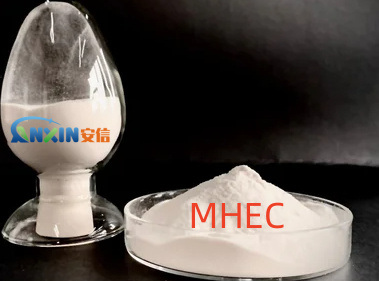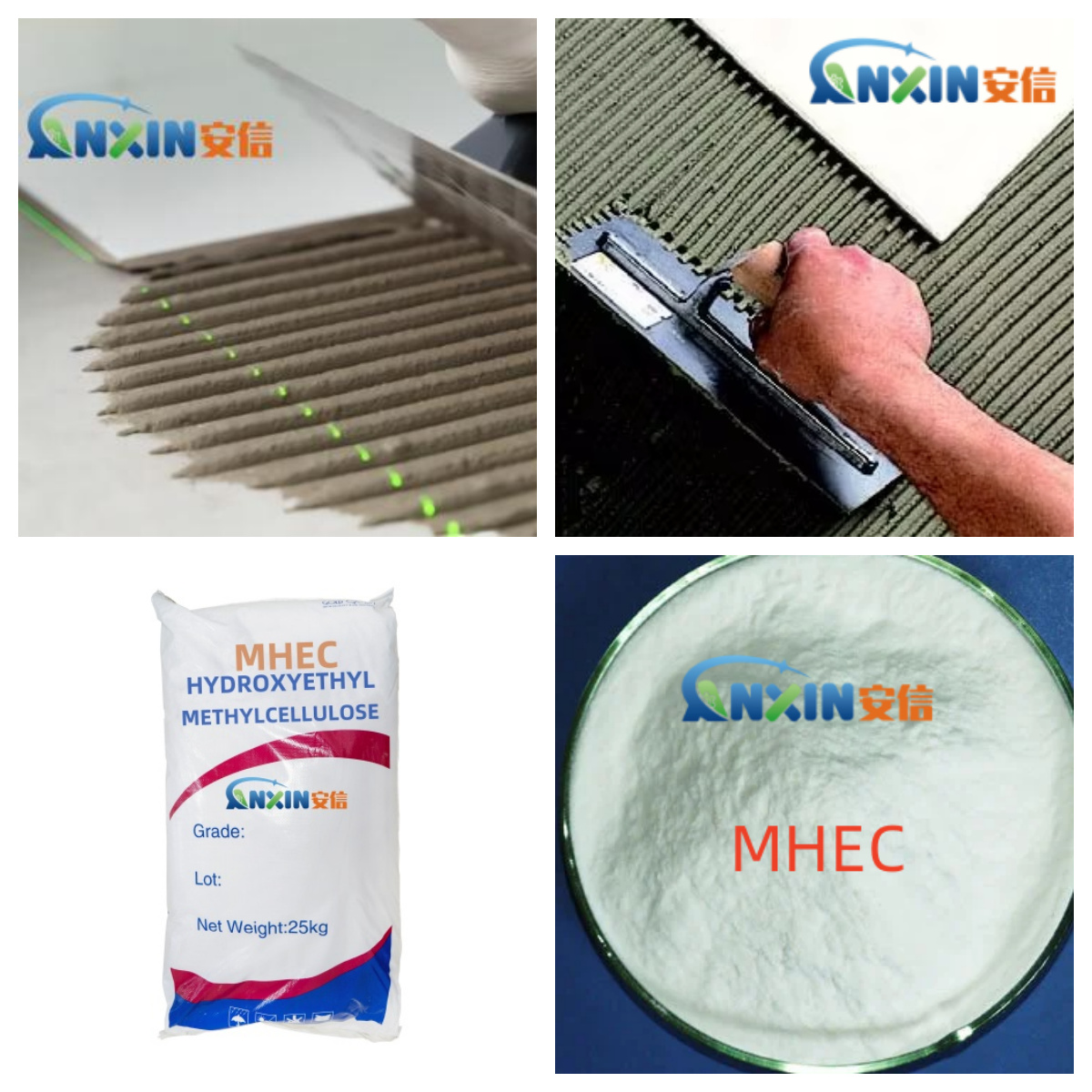Methyl Hydroxyethyl Cellulose (MHEC) is a nonionic, water-soluble cellulose ether widely used in the building materials industry, particularly in tile adhesives. The addition of MHEC to tile adhesives not only optimizes workability but also enhances bonding and durability, making it an indispensable additive in modern building and decoration materials.
1. Thickening Effect, Improving Workability
Tile adhesives require excellent workability, and the thickening effect of MHEC is a key factor in achieving this. MHEC dissolves in water to form a highly viscous adhesive, significantly increasing the adhesive’s cohesive strength, preventing it from running during application and improving vertical slip resistance during installation. This is particularly important for wall installations, preventing tiles from sliding down before they are secured.
Excellent thixotropy allows tile adhesive to flow easily when stirred or applied, ensuring smooth application. After application, it quickly regains its high viscosity and maintains its shape, improving work efficiency and precision.
2. Improved Water Retention and Promotes Cement Hydration
MHEC’s exceptional water retention is another important function in tile adhesives. This high water retention prevents premature water loss from the slurry, significantly reducing cracking when applied to high-temperature or highly absorbent substrates (such as concrete and brick).
High water retention also promotes full hydration of the cement, thereby enhancing the bond strength and long-term durability of the tile adhesive. This “internal moisture retention” property of MHEC enables tile adhesive to perform stably in a variety of challenging environments, making it particularly suitable for thin-ply applications and the installation of large tiles.
3. Enhanced Adhesion and Flexibility
Although MHEC itself is not an adhesive, the colloidal network structure it forms helps increase the contact area and bond uniformity between the tile adhesive and the substrate, indirectly improving overall bonding performance. MHEC also improves the flexibility of tile adhesive, allowing it to adapt to thermal expansion and contraction, or slight movement, without cracking, thereby extending its service life.
4. Improved Open Time and Pot Life
Adding MHEC significantly extends the open time of tile adhesive. This means that after applying the adhesive to the substrate, workers have more time to lay the tiles. This is particularly important in large-scale construction, helping to improve construction efficiency and reduce rework.
Also, the pot life of the tile adhesive is extended, meaning that the mixed adhesive maintains its performance for a period of time, preventing rapid hardening and failure, making construction management easier.
5. Environmentally friendly and safe, adaptable to a variety of formulations
MHEC is a non-ionic cellulose ether that does not participate in the cement gelling reaction and does not release harmful gases, meeting the requirements of green and environmentally friendly building materials. It has good compatibility with other additives (such as redispersible latex powder, quartz sand, and cement) and can be widely used in tile adhesive formulations of various grades, including C1 and C2.
6. Compatible with Various Tiles and Substrates
MHEC provides excellent application performance in tile adhesives, whether applied to traditional small-format tiles or modern high- or low-water-absorption products such as large slabs, vitrified tiles, and floor tiles. Its excellent performance also allows for wide adaptability and high stability over a wide range of substrates, including concrete, brick walls, and cement mortar screeds.
MHEC primary applications in tile adhesives include enhancing thickening properties, water retention, and improving workability and bonding. It is a key additive for ensuring efficient, stable, and easy-to-apply tile adhesives. With advancements in construction technology and the development of green building materials, the application of MHEC in tile adhesives will expand and its value will grow.
Post time: Aug-01-2025

